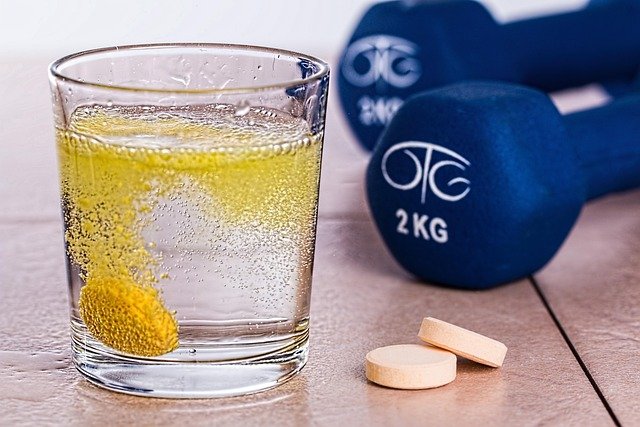Hydration and topical care for active lifestyles
Maintaining healthy skin and steady performance starts with consistent hydration and targeted topical care. For people with active routines—whether strength training, cardio, or mobility work—combining internal hydration, nutrition, and smart topical practices supports recovery, skin health, and functional performance over time.

Active lifestyles place distinct demands on the body and on the skin that covers it. Hydration and topical care are often treated as separate concerns, but when paired with thoughtful nutrition, rest, and movement routines they work together to support regeneration, reduce irritation, and help maintain mobility and performance. This article outlines practical approaches for everyday athletes and active people to keep skin resilient while supporting recovery and long-term strength and flexibility goals.
Hydration and skin balance
Adequate hydration is foundational to both skin health and systemic recovery. Drinking consistent fluids helps regulate body temperature during cardio sessions, supports nutrient transport to muscles after strength work, and contributes to skin turgor and barrier function. For many active people, electrolyte balance matters as much as water alone—sodium and potassium losses through sweat can affect both performance and how the skin reacts to topical products. Beyond drinking, pay attention to indoor humidity and gentler cleansers after workouts to avoid stripping natural oils that aid skin regeneration.
Topical care and regeneration
Topical products can soothe, protect, and assist skin regeneration when chosen to match activity levels. After exercise, gentle cleansing removes sweat and bacteria; follow with lightweight, non-comedogenic moisturizers to restore the barrier. Ingredients such as ceramides, glycerin, and panthenol support hydration without heavy occlusion. For targeted concerns—chafing, irritation, or sun exposure—use barrier creams, mild anti-inflammatories, or broad-spectrum sunscreen. Patch-test new items before applying them to larger areas, especially if you use them around joints that experience frequent friction during mobility and strength work.
Recovery routines for strength and cardio
Recovery routines should pair hydration, nutrition, and topical care. Post-workout hydration that includes electrolytes can speed physical recovery after intense cardio or resistance sessions. Protein and carbohydrate choices in the recovery window support muscle repair and glycogen restoration, while topical cooling or soothing gels may provide comfort for superficial inflammation. Integrating short mobility sessions after strength training and light aerobic cooldowns reduces stiffness and supports circulation, helping nutrients reach tissues involved in regeneration.
Mobility and flexibility practices
Mobility and flexibility exercises reduce the risk of overuse injuries and help skin at areas of repeated movement adapt to mechanical stress. Dynamic warm-ups before cardio or strength work and static stretching afterward improve joint range and reduce tension on skin and subcutaneous tissues. When mobility work reveals friction-prone areas—such as inner thighs or under the arms—consider fabrics, lubrication, or topical protectants to reduce chafing and maintain skin integrity during repeated sessions.
Nutrition for performance and regeneration
Nutrition supports skin, muscle, and overall performance. Hydrating foods (fruits and vegetables) contribute to fluid balance and provide antioxidants that support regeneration and reduce oxidative stress from rigorous workouts. Sufficient protein intake supports muscle repair after strength training; fats, particularly omega-3s, can influence skin barrier health and inflammation. Timing matters: a balanced meal or snack that pairs carbohydrates and protein within a few hours of exercise aids recovery, while ongoing attention to hydration throughout the day maintains steady performance and skin moisture from the inside out.
Rest, sleep, and long-term recovery
Rest is integral for regeneration of both skin and muscle. Deep sleep supports hormonal signals that drive tissue repair and collagen synthesis, and inadequate rest can slow recovery from cardio and strength sessions, reducing gains in strength and mobility. Nighttime skin routines that include gentle cleansing and restorative moisturizers can complement physiological repair. Plan rest days and active recovery sessions to avoid chronic inflammation, and consider how topical care—like emollients on dry areas—can prevent micro-tears or irritation that impede longer-term recovery.
This article is for informational purposes only and should not be considered medical advice. Please consult a qualified healthcare professional for personalized guidance and treatment.
Conclusion
For active individuals, combining consistent hydration, purposeful nutrition, mobility-focused movement, and appropriate topical care creates a supportive environment for both skin health and physical performance. A routine that addresses fluid balance, post-exercise recovery, and protective topical strategies helps maintain flexibility, strength gains, and comfort during cardio and strength activities, supporting sustainable progress and regeneration over time.





